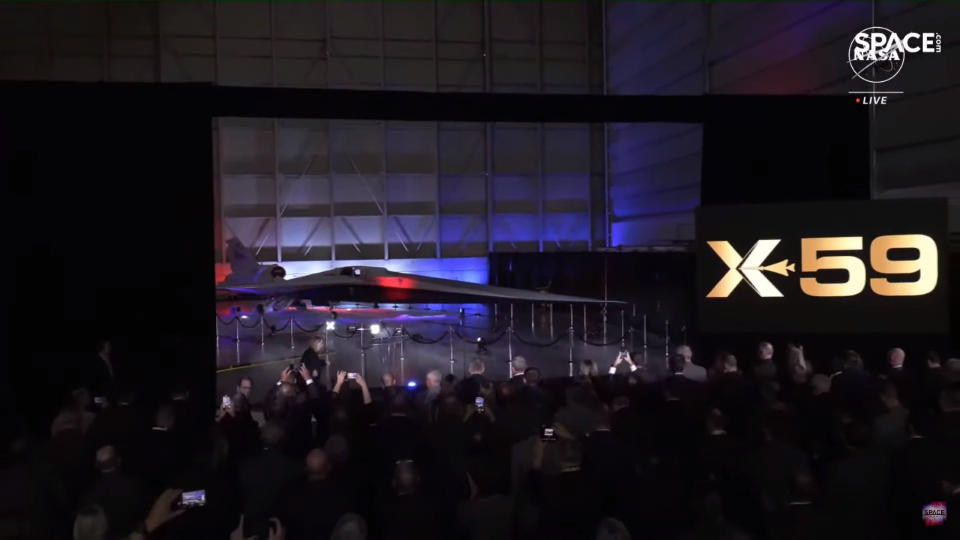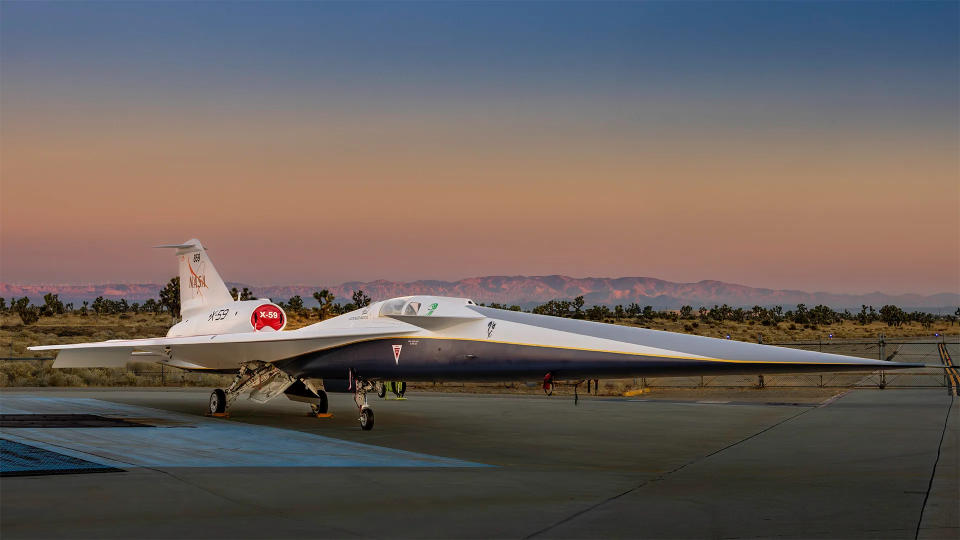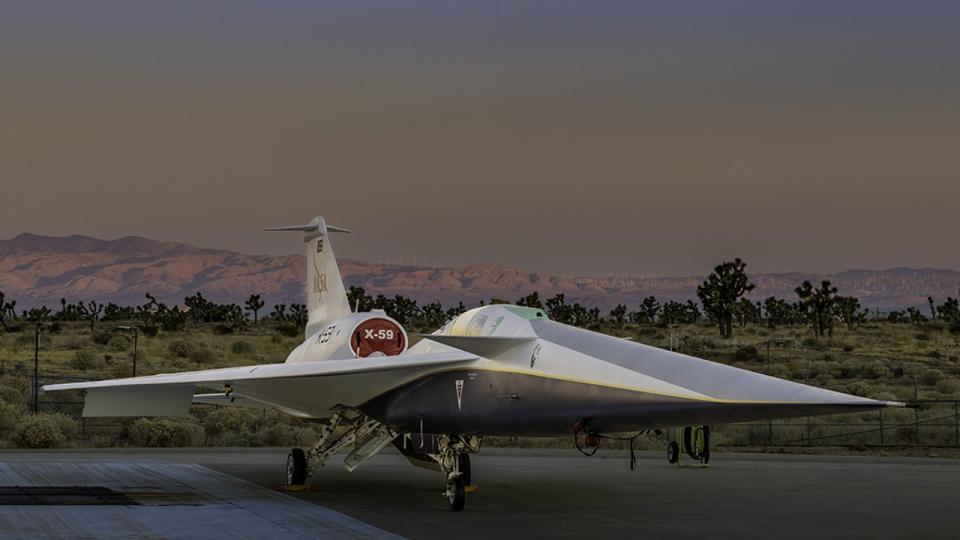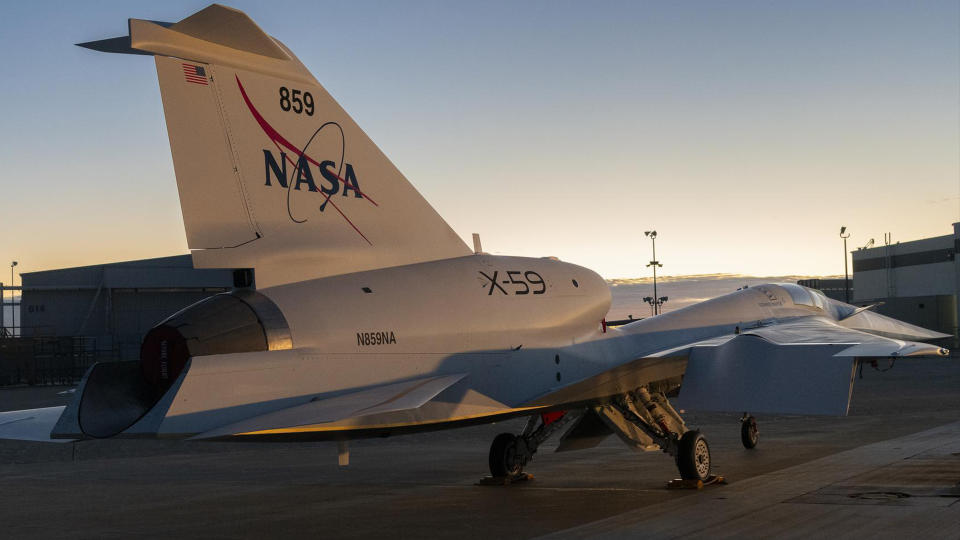X-59 is finally here.
NASA’s newest X-plane, the X-59, is designed to break the sound barrier without the violent sonic booms that usually occur when planes go supersonic. Instead, Quesst will produce a much quieter “thump,” similar to the sound of a car door slamming heard from inside. If successful, the jet has the potential to revolutionize supersonic flight and aviation in general.
After years of development, NASA and Lockheed Martin unveiled the completed X-59 Quesst (“Quiet SuperSonic Technology”) today (January 12) before a crowd of approximately 150 people at the legendary Lockheed Martin Skunk Works facility in Palmdale, California. , a research and development site generally known for its secrecy.
In photos: Spectacular X-Planes from X-1 to XV-15

“It’s rare that we have the opportunity to host this many visitors at Skunk Works, and it’s even rarer that we can publicly showcase one of our aircraft,” said John Clark, vice president and general manager of Lockheed Martin Skunk Works. .
When the curtain finally fell to reveal the The plane’s long, beak-like nose stood out prominently, highlighting the fact that it had no forward-facing windows.
“This is a moment that future generations will look back on with awe and admiration,” said Greg Ulmer, Lockheed Martin’s vice president of aviation. “Skunk Works’ mantra of fast, quiet and quality takes on a whole new meaning as we usher in the hopes of a new era of quiet supersonic travel made possible through our collaboration with NASA.”
In photos: Chuck Yeager: The First Person to Break the Sound Barrier


During the opening ceremony, NASA Deputy Administrator Pam Melroy highlighted the agency’s long history of pioneering groundbreaking aerospace advances.
“The first A in NASA stands for aeronautics. And we’re all about groundbreaking aerospace innovation,” Melroy said. “The X-59 proudly continues that legacy, representing the forefront of technology that moves aviation forward.”
NASA’s latest X-plane (‘X’ for ‘experimental’) is the result of decades of research and incorporates completely different manufacturing approaches, including new augmented reality systems, robotic drilling and 3D modeling techniques.
“This isn’t just an airplane, this is an X-plane,” Melroy added. “This is a manifestation of collaborative genius.”


But Melroy admitted he had some initial doubts about the revolutionary aircraft. “As a test pilot, when I first looked at the design I was like ‘hmm’ and I actually had some questions about it.”
Melroy was specifically referring to the fact that the X-59 did not have a forward-facing window; this was a design choice that helped reduce the sonic boom produced by the aircraft. Instead, there’s what NASA calls the eXternal Vision System (XVS), which consists of a camera and a cockpit-mounted display that gives pilots an augmented reality view of what’s in front of the jet.
Melroy said this system has the potential to revolutionize aircraft design.
“We did not feel comfortable deploying a crewed flight vehicle without first testing it, so this groundbreaking technology is truly a beacon that moves us towards a future where visibility barriers in aircraft design can be overcome with this creative solution.”


NASA leadership used the statement to underscore the roles that both the agency and the Southern California region have played in America’s rich history of pushing the boundaries of aviation. “This journey actually began in 1947 in the high desert of California with test pilot Chuck Yeager and the X-1, ushering in the era of supersonic flight,” said NASA Deputy Director of the agency’s Aeronautics Exploration Mission Robert Pearce.
NASA deputy administrator Jim Free continued that sentiment, noting that the X-59 is only the latest in a long line of NASA X-planes that have revolutionized aviation throughout the agency’s history.
“Even among other X-planes, the And after they prove these concepts, they often go to museums. And that’s really what makes the X-59 different.”
RELATED STORIES:
— DARPA’s wild X-65 CRANE drone targets first flight in summer 2025
— NASA and U.S. Air Force unveil new X-plane (X-66A) to test wild wing design for fuel-efficient flight
— Photos: The amazing X-Planes from X-1 to XV-15
Free was referring to the fact that once the X-59 is ready for flight, the jet will make multiple flights over specific populated areas in the United States to collect data on how people on the ground below respond to and experience quieter sound. explosions it creates.
NASA will then use this data to gain approval for commercial supersonic flights from regulatory agencies such as the Federal Aviation Administration, with the ultimate goal of making aviation more sustainable and enabling faster flight in populated areas.
“The X-59 represents a nearly 100-foot forward step in the journey of discovery that began decades ago—a step toward opening the door to sustainable commercial supersonic flight over land,” Pearce added.
Some applications of supersonic flight mentioned in today’s launch include rapid medical response, shorter transportation times, and of course, faster travel.
NASA and Lockheed Martin aren’t the only ones flying commercial flights at speeds above the sound barrier. Colorado-based Boom Supersonic is developing the XB-1, a commercial supersonic passenger jet that the company hopes to take to the air on its first flight in 2027.